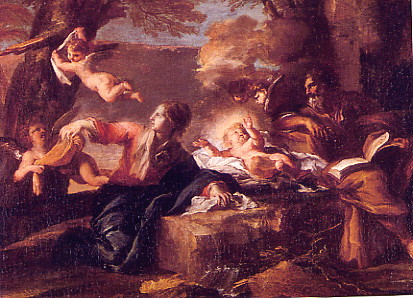
As a cognitive process, thinking bridges the gap between stimulation and response, and therefore it affects performance. Thinking is better understood through an examination of its components and applications.
Thinking involves two major kinds of components: images and concepts.
To answer the question," What shape are a German Shepherd's ears?" it is probably not necessary to review all your knowledge or memory about dogs, ears or dogs' ears. It is most likely that you will simply picture a German Shepherd, focus on this mental image, and produce the answer : " pointed ".
Images are components of thinking in that they summarize and provide information. Specifically, an image is a mental representation of a sensory experience. Most imagery research has studied visual representations, although imagery can involve impressions of sound, taste, smell, and touch as well.
Images are useful in representing sensory details. They can also be used to menatlly "arrange" teh parts of a problem or pupzzle. For example, in solving the riddle, "John is not as smart as Sue, but is smarter than Lee; who is smartest?" one may visualize a spatial ordering of John, Sue,and Lee along a "smartness" scale to produce the correct answer.
Individual differences have been discovered in ability to use imagery and in the vividness of imagery produced. Children may experience more accurate or vivid imagery than adults, who have learned to rely more on the propositional thinking of ideas and concept relationships.
2. Concepts
All thinking requires concepts, mental representations of categories of experiences according to common features. The concept of "apple" for example, is really a category of many different examples, since real apples can be red, yellow or green , sweet or sour, on a tree, in a basket of fruit or sliced and baked into a pie. The "common features" of all apples have to do with hard-to-describe qualities of taste and texture, origin and form. The concept of "fruit" is a broader category, since it includes the concept of "apple" as well as many other, quite different concepts.
No comments:
Post a Comment